Ancient Psychedelia: Alien Gods & Mushroom Goddesses
Online Book - Chapter 11, Page 218
Back to Online Book Mainpage / Next Page (Chapter 11, Page 219)
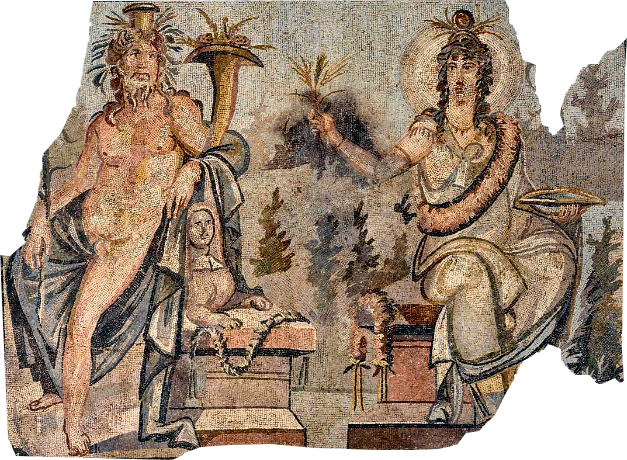 (30e) Roman Mosaic Depicting Isis and Serapis c. 300-400 AD 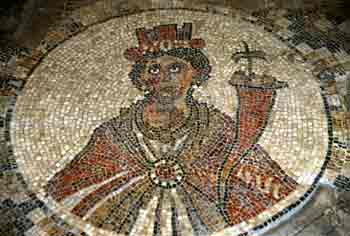 (66h) Beit She'an. c. 500 AD Here is an interesting connection to the mushroom and the cornucopia. From Wiki: “Craterellus cornucopioides, or horn of plenty, is an edible mushroom. It is also known as the black chanterelle, black trumpet, trompette de la mort (French), trombetta dei morti (Italian) or trumpet of the dead.” It is commonly found in woods in North America, Europe, Japan and Korea, primarily growing under beech and oak. It’s also considered a very delicious edible mushroom. Coincidence? The Kantharos is a two-handled libation cup of sorts, a serving cup for some kind of liquid substance. The name Kantharos is ancient and literally means “dung-beetle,” although the Classic scholars would have a difficult time explaining why it has any connection to the dung beetle since it has no shape similarities. (250) This serving cup surfaces repeatedly in Classical mythology commonly being held by Dionysus or Herakles or any number of mushroom or later wine gods. (251) Usually, the shape depicts a mushroom directly, but this is also overlooked by just about everyone, probably because the most useful tactic is employed to deceive through occultation, which is turning something upside down and inverting it. Symbolism is a highly powerful language and one well worth understanding. The following examples shown range from Greek Apulian kantharos c. 340-325 BC (47d) to Greek coins c. 520-490 BC (48a, h; 51a), to Hebrew coins c. 67-135 AD (51b, d, i), to Roman coins c. 197-218 AD (52b). |
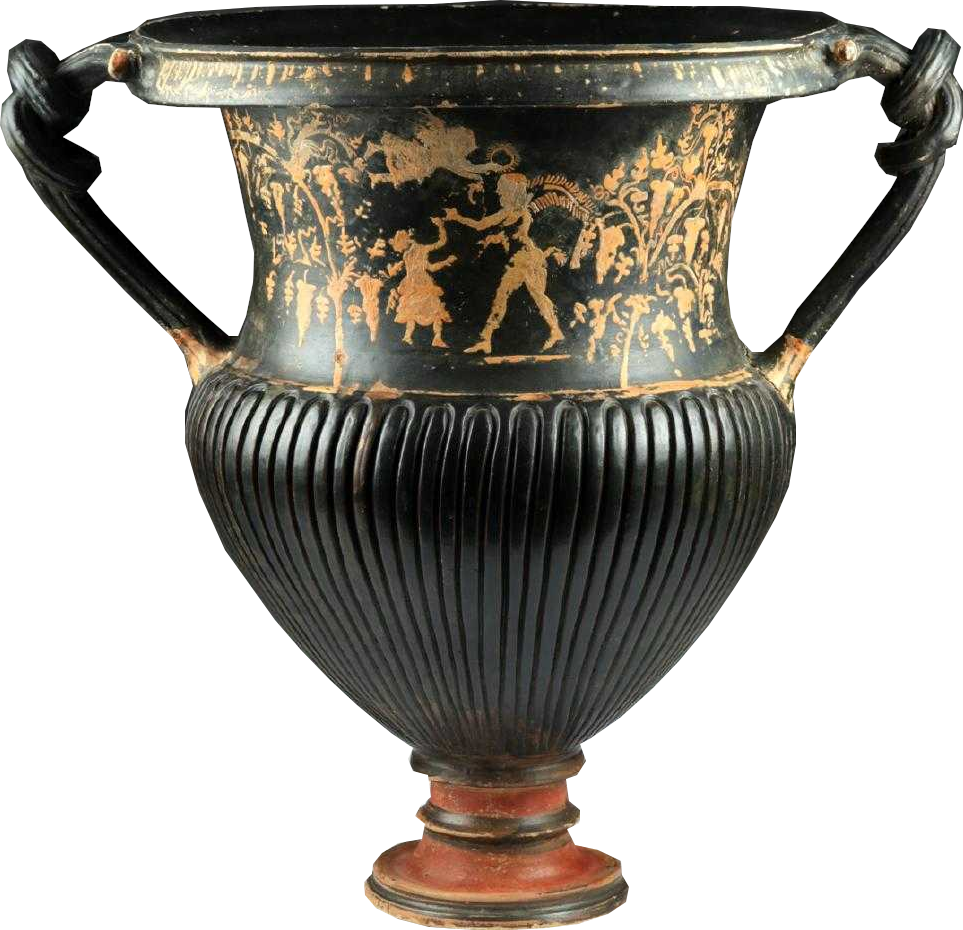 (47d) Apulian Terracotta Vessel w/ Herakles Knots Southern Italy c. 340-325 BC L: (48a) Cyclades Naxos, Kantharos with ivy leaf above and bunch of grapes c. 520-490 BC 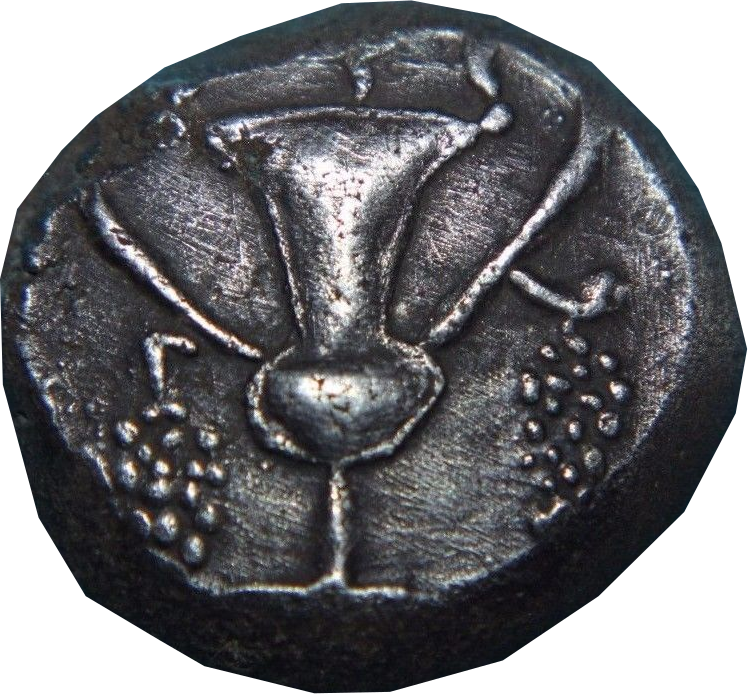 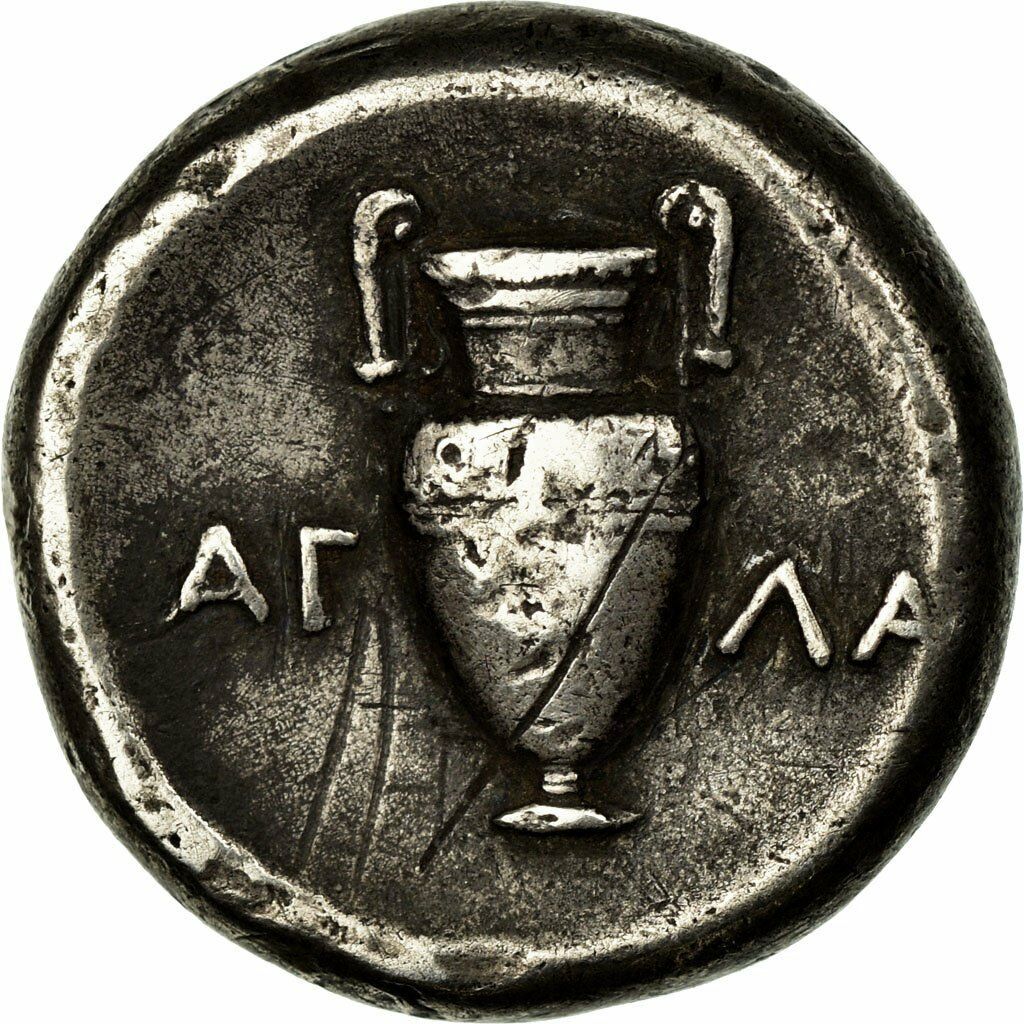 R: (48h) Thebes Boeotia. Kantharos c. 395-377 BC L: (51a) Calabria, Tarentum. Greece Kantharos c. 280-228 BC 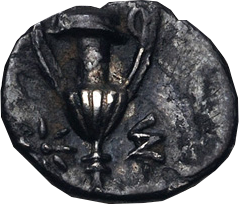 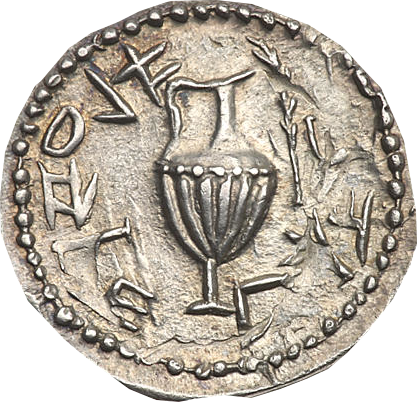 R: (51i) Judea, Bar Kokhba Revolt c. 132-135 AD L: (51b) "Freedom of Zion" First Jewish Revolt c. 67-68 AD 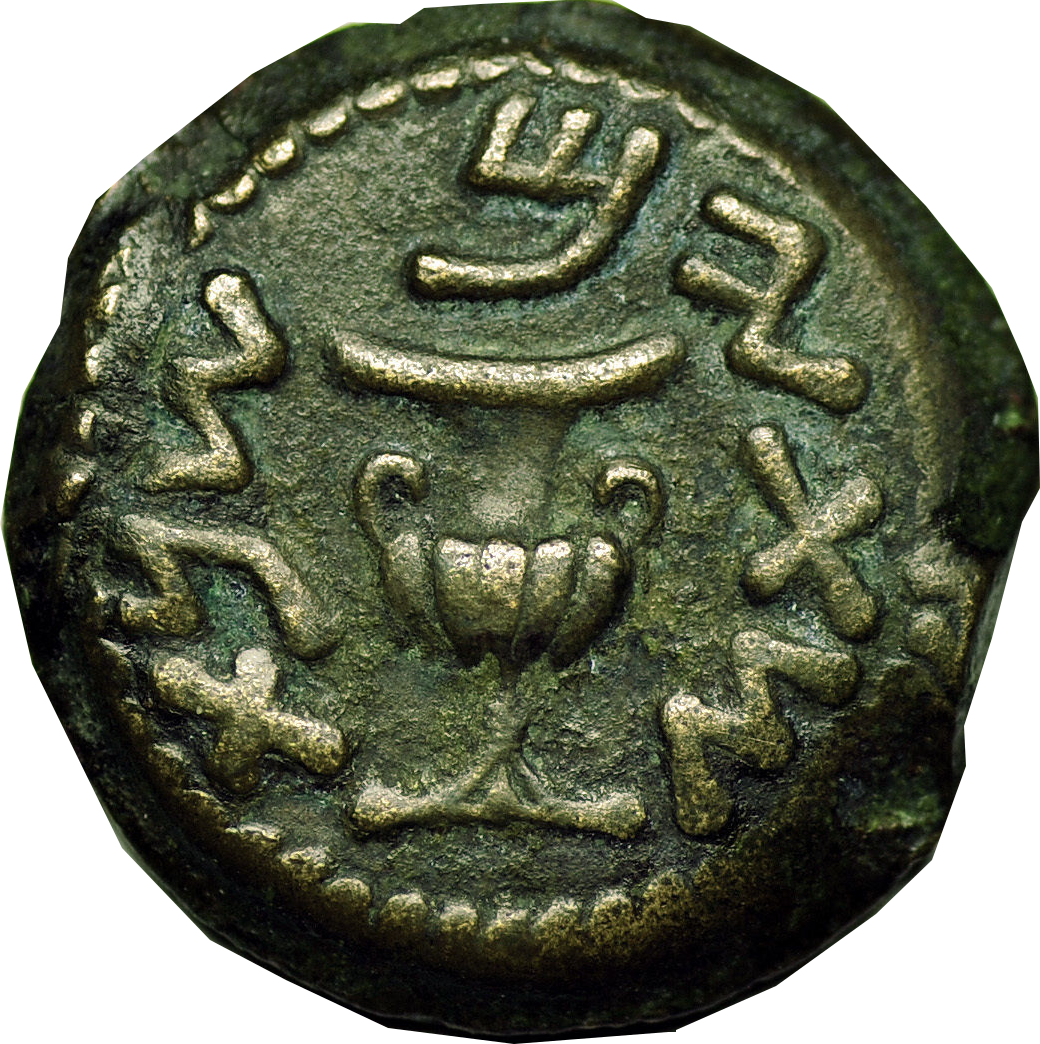 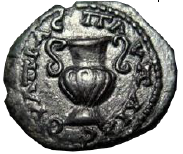 R: (52b) Rome Provincial of Pautalia, Thrace Rev: Amphora c. 197-218 AD < (250)https://www.beazley.ox.ac.uk/tools/pottery/ shapes/kantharos.htm) (251) Apples of Apollo, p. 9 |
Go Back to Page 217